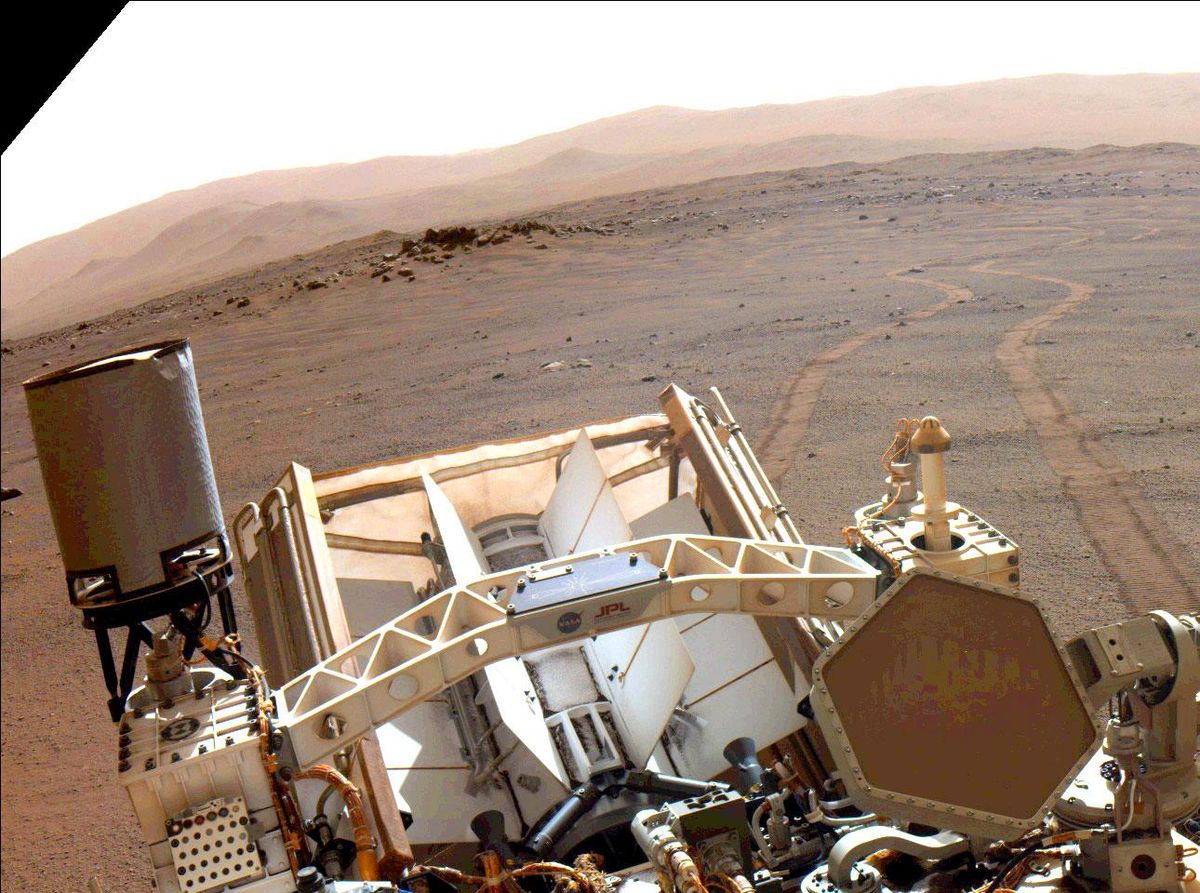Video Friday is your weekly selection of awesome robotics videos, collected by your friends at IEEE Spectrum robotics. We also post a weekly calendar of upcoming robotics events for the next few months. Please send us your events for inclusion.
ICRA 2022: 23–27 May 2022, Philadelphia
IEEE ARSO 2022: 28–30 May 2022, Long Beach
RSS 2022: 21–1 June 2022, New York
ERF 2022: 28–30 June 2022, Rotterdam, the Netherlands
RoboCup 2022: 11–17 July 2022, Bangkok, Thailand
IEEE CASE 2022: 20–24 August 2022, Mexico City, Mexico
CLAWAR 2022: 12–14 September 2022, Açores, Portugal
Enjoy today's videos!
NASA’s Perseverance Mars rover is using its self-driving capabilities as it treks across Jezero Crater seeking signs of ancient life and gathering rock and soil samples for a planned return to Earth. With the help of special 3D glasses, rover drivers on Earth plan routes with specific stops, but increasingly allow the rover to “take the wheel” and choose how it gets to those stops. Perseverance's auto-navigation system, known as AutoNav, makes 3D maps of the terrain ahead, identifies hazards, and plans a route around any obstacles without additional direction from controllers back on Earth.
[ JPL ]
Cassie walking while carrying two heavy jugs swinging all over the place is damn impressive.
[ DRL ]
The Suzumori Endo Lab at Tokyo Tech has developed a soft tensegrity robot driven by thin artificial muscles, the movement of which makes me vaguely uncomfortable.
[ Tokyo Tech ]
MIT engineers have developed a telerobotic system to help surgeons quickly and remotely treat patients experiencing a stroke or aneurysm. With a modified joystick, surgeons in one hospital may control a robotic arm at another location to safely operate on a patient during a critical window of time that could save the patient’s life and preserve their brain function.
[ MIT ]
For LOVOT, a new robot accessory that you never knew you (or anyone) needed.
[ LOVOT ]
Meet Cassie, an electrical engineer at Boston Dynamics, as she answers real questions from kids and other curious minds—from how to start a career in robotics to Spot’s favorite color.
[ Boston Dynamics ]
2021 research highlights from the CNRS-AIST Joint Robotics Laboratory.
[ CNRS-AIST JRL ]
The Rai Lab at KAIST would like to introduce Raibo, a “dynamic and versatile quadruped robot.”
[ Rai Lab ]
The M1600 was designed for high-volume robotic applications with direct input from our customers. This durable and compact sensor can be deployed in a wide variety of environmental and weather conditions, allowing for 365-day, 24/7 usage. It can provide the smart, real-time point clouds required by autonomous mobile robots and last-mile delivery for safe and extended operation without human intervention.
[ Velodyne ]
While I appreciate that Digit is a robot made for work, I’d love to see them build a robot made for fun.
[ Agility Robotics ]
Getting drones to perch on vertical surfaces would be much easier if we just covered the world in velcro, wouldn’t it?
[ NYU ARPL ]
An upcoming ICRA paper from Kostas Alexis at the Norwegian University of Science and Technology about the SubT strategy of Team Cerberus.
This paper presents a novel strategy for autonomous teamed exploration of subterranean environments using legged and aerial robots. Tailored to the fact that subterranean settings, such as cave networks and underground mines, often involve complex, large-scale and multibranched topologies, while wireless communication within them can be particularly challenging, this work is structured around the synergy of an onboard exploration path planner that allows for resilient long-term autonomy, and a multirobot coordination framework.
[ GitHub ]
Two excellent seminars from the University of Toronto Robotics Institute, featuring Henny Admoni from Carnegie Mellon University and Dorsa Sadigh from Stanford.
UofT Robotics Institute Seminar: Dorsa Sadigh on Learning from Non-Traditional Sources of Datawww.youtube.com
[ UofT ]
The CMU Teruko Yata Memorial Lecture is presented by Jeannette Bohg from Stanford, on Leveraging Language and Video Demonstrations for Learning Robot Manipulation Skills and Enabling Closed-Loop Task Planning.
Humans have gradually developed language, mastered complex motor skills, created and utilized sophisticated tools. The act of conceptualization is fundamental to these abilities because it allows humans to mentally represent, summarize, and abstract diverse knowledge and skills. By means of abstraction, concepts that we learn from a limited number of examples can be extended to a potentially infinite set of new and unanticipated situations. Abstract concepts can also be more easily taught to others by demonstration.
[ CMU ]
Evan Ackerman is a senior editor at IEEE Spectrum. Since 2007, he has written over 6,000 articles on robotics and technology. He has a degree in Martian geology and is excellent at playing bagpipes.



